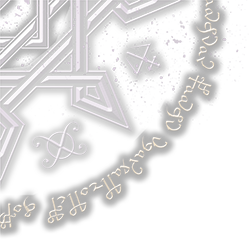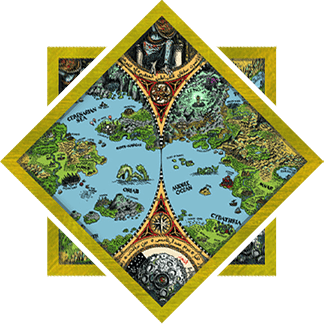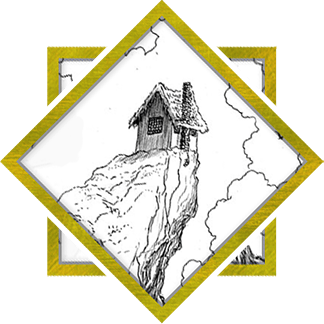
The Dream Cycle

A world beyond our own
Like many other artists, H.P. Lovecraft (1890 – 1937) attempted to honour his idols by creating works of literature that would be as meaningful to his own readers as the works of his predecessors’ were to him. Aside from Edgar Allan Poe (1809 – 1849), the stories of Lord Dunsany (1878 – 1957) had the greatest influence on him.
Lovecraft attempted to emulate the opulent and dreamlike fantasy style of the successful Irish author while simultaneously adapting it into a unique voice by using his dreams as the source of new plots and ideas. Lovecraft imitated Dunsany further by also creating continuing series of stories set in a parallel world with its own mythology and history – The Dreamlands.

The Dream Cycle
When speaking of the Dream Cycle it is understood to mean all of Lovecraft’s stories that pertain either directly or indirectly with the Dreamlands. In a literal sense, the Dream Cycle can be said to encompass every tale that in some way, either directly references or indirectly insinuates some aspect of the Dreamlands so as to form a connection to the entire cycle. It’s suspected that Lovecraft himself never saw this series of tales as an interconnected and coherent narrative.
The following stories form the undisputed core of the Cycle:
“Polaris” (1918)
“The White Ship” (1919)
“The Doom That Came to Sarnath” (1919)
“The Cats of Ulthar” (1920)
“Celephaïs” (1920)
“Ex Oblivione” (1920)
“The Quest of Iranon” (1921)
“The Other Gods” (1921)
“What the Moon Brings” (1922)
“The Dream-Quest of Unknown Kadath” (1926)
“The Silver Key” (1926)
“The Strange High House in the Mist” (1926)
“Through the Gates of the Silver Key” (1932)

A Consumate Concept
H.P. Lovecraft wouldn’t have become one of the most important and influential writers of sophisticated horror stories if he had simply imitated his predecessors.
His works display an unmistakably unique voice and vision, which during the later phase of his career finally achieved a cohesion and originality that retroactively included his entire body of work.
Because of this evolution, the majority of his work can be connected one way or another with the Cthulhu Mythos. Which, when taken as a whole, reveals the development of a terrifying cosmology.
This concept, by remaining disjointed and incomplete, turned out to be the cornerstone of Lovecraft’s (who died in poverty believing himself to be an abject failure) enormous posthumous success: the expandability and applicable versatility of this unique cosmological vision. Be it in Books, Computer Games, Role Playing Games or Film.
